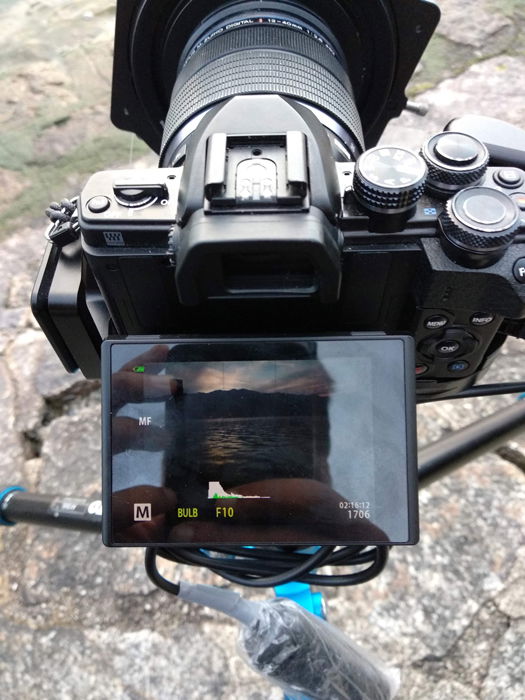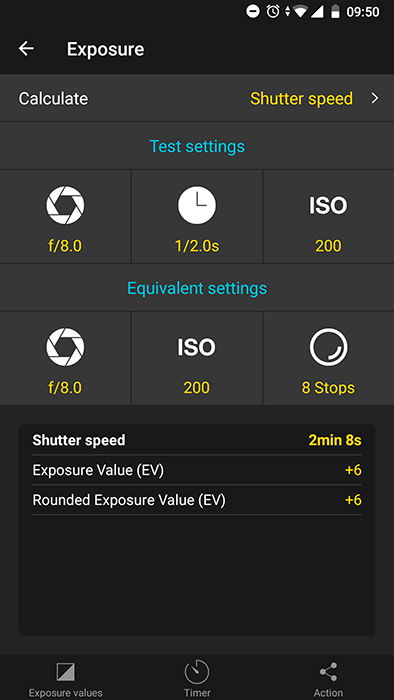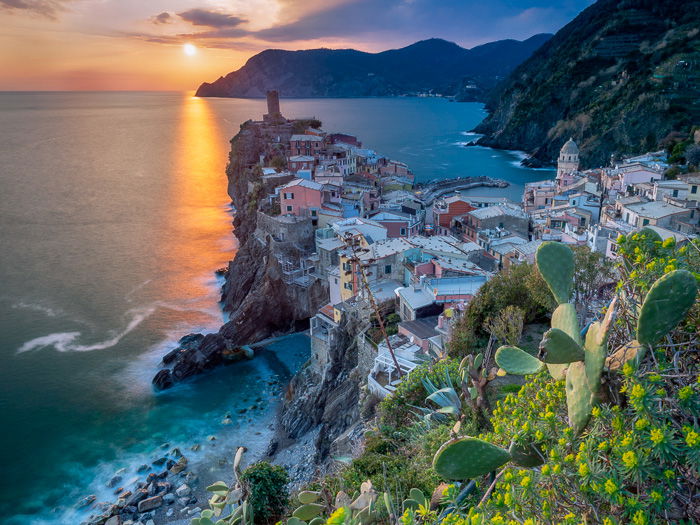Bulb mode allows you to keep the shutter open for as long as you press the shutter button. It’s ideal for getting better long exposures, and we’ll show you exactly how to use it.
Before we start telling you how to use this feature, let’s answer the question we know is in your head right now. Why is this setting called Bulb Mode?
Back in the day, people triggered long exposures by attaching a rubber bulb to the shutter. When squeezed, the air pressure inside it pushed down the button.
Of course, rubber bulbs aren’t necessary these days. But the name stuck.
With modern cameras, you can only shoot up to 30 seconds of exposure. But when you activate the Bulb setting, you can keep the shutter open for minutes or even hours.

I photograph landscapes, seascapes, and starry night skies all the time. Long exposures using bulb mode are a constant in my life. But I wouldn’t get the results that I want without the help of a shutter release.
Why? Well, there’s a high risk you’ll move the camera when using in Bulb Mode and end up with blurry photographs. That’s why we recommend you use a remote shutter release when shooting in bulb exposure mode.
The shutter release allows you to trigger the camera without having to touch it.
There are all sorts of shutter release designs out there. Some have a cable that lets you connect to the camera, while others are wireless. The most advanced options are intervalometers, such as the Pluto Trigger.
An intervalometer doesn’t just function as a regular shutter release. It lets you decide how many photographs to shoot and how often to take them. It’s useful in creating time-lapses, star trails, light painting, and so on.

The shutter release you see in the photo above might not look like much. But it’s very sturdy and doesn’t need any extra batteries either.
To use Bulb Mode with a remote shutter, all you have to do is press the button and slide the lock that’s on the handle. That way, the button stays depressed without you having to keep your thumb on it while doing a long exposure shot.
A tripod is another indispensable accessory when using Bulb Mode.
Tripods vary in prices and features. You don’t need the fanciest carbon fiber tripod if you’re photographing light trails in the city. But you will need it if you’re shooting a waterfall from the middle of a river with an exposure of 30 seconds or more.
Of course, you don’t always need to get the most expensive tripods when using Bulb Mode. But there are a few features you need when using slow shutter speeds.
For instance, you’ll want sturdy legs that can support the weight of your camera and lens.
It will also help if it has a hook under the center column where you can attach a sandbag. Adding weight prevents your tripod from moving. This is especially useful when you’re dealing with strong winds outdoors.
If possible, stay away from plastic tripods as they’re not heavy duty. Aluminum options work just as well as carbon fiber ones. They may be a bit heavier, but a least they’re affordable.
Do you need a new tripod? Feel free to check out our tripod recommendations here!

I use Bulb Mode to create landscape images with very long exposures. But you can also use this bulb mode for lightning photography as well.
Point your camera in the direction with the most lightning strikes, and start recording the exposure. Once the lightning strikes, stop the exposure.
For my purposes, I take pictures before or during sunset or the blue hour.
The technique I use is possible by using neutral density filters. These allow me to stretch the shutter speed as desired.
For example, I have ND filters that increase the exposure time by 6, 8, and 10 stops.

Without any filter in front of the lens, you have a shutter speed of half a second. But if you use an 8-stop ND filter, it will give you a shutter speed of 2 minutes and 8 seconds.
When using filters to keep shutter speeds longer, it is usually necessary to use a combination of other filters.
For landscapes, this means using a polarising filter as well. It removes reflections from non-metallic surfaces and saturates colors better.
Also, GND or graduated neutral density filters may be fundamental to control the exposure and histogram.
The polarising filter usually reduces the light amount by 0.7-1 stop compared to the base exposure. The GND filters can instead remove 1 to 4 or 5 light stops.
And then, you have to add ND filters to lengthen your shutter speed.
So how do you use Bulb Mode in Canon, Nikon, Sony, and other popular cameras? All you have to do is adjust your shutter speed and lower it to 30 seconds. Once you reach that point, go down one more notch, and you’ll automatically enter Bulb Mode.
One of the main issues of Bulb Mode photography is that light changes during your exposure. You’ll see this happen a lot especially when you shoot Bulb Mode at dawn or dusk.
During sunrise, the light will increases very quickly as the sun rises from the horizon. During sunset, you will be in complete darkness in the round of 30 minutes. Between the start and the end of the shot, you could incur a significant change in the amount of available light. Here, you find yourself encountering a lot of bad exposures.

What I tend to do as a landscape photographer is to take one or two shots with the Bulb Mode. I do this after performing a series of test shots for the exposure.
When I like the exposure after checking the histogram, I start to calculate the final exposure.
To do this, I use a smartphone app like PhotoPills.

After shooting, it is good practice always to check the histogram. The image you see on the camera screen is a low resolution and low-quality version of the raw file.
The histogram is the faithful representation of the image. And it shows you the pixel distribution along the axis representing the brightness values.
Once you have adjusted the exposure the way you want it, add the CPL filter and the necessary GND filters. And once the histogram has the shape you want, adding the ND filter should only mean recalculating the shutter speed.
The final photograph should have a histogram like that of a basic test photograph.
The other problem with Bulb Mode is that you have to take into consideration concerns the composition.
When you take long exposures with the Bulb Mode, bad compositions become more evident.
To avoid any composition issues, you need to control the moving elements. It could be anything from clouds, rivers, water, waves in the sea, light trails, sun, moon, stars and so on.
Once you are in Bulb Mode, position the tripod and your camera. Next, set the focus point. Then set the polariser filter, along with its effect. Next, place the GND filters to control zones with different brightness.
In choosing your composition, you will also need to take into consideration the moving elements and their direction.

When you use Bulb Mode, the sensor will remain exposed for as long as you keep the shutter open. As a result, the prolonged exposure time will heat the sensor. This process produces digital noise. You see them as little colored spots in your image.
A small trick to get the cleanest raw files to edit in post-production is to apply long exposure noise reduction in-camera. It’s a feature that all the modern DSLR and mirrorless cameras have. The camera, in a completely autonomous way, snaps a second frame with the shutter wholly closed.
The second frame, also called the dark frame, will last the same amount of time as the original one.
At the end of this shot, the camera will drop what it considers to be digital noise produced by overheating the individual sensor sites.
I use it very often on my Olympus camera for exposures that last from 30 seconds to two or four minutes.
Remember that when using slow shutter speeds, the noise reduction will need twice the time of your initial exposure.
I love long exposure photography. Over the years, I have learned to love and manage the Bulb Mode in my cameras.
This article is full of tips and tricks I wish I had known many years ago when I started with landscape photography.
Now go out there and practice using bulb mode for your shots!
Looking for more tips? Why not check out our new post on how to understand exposure value next!
You can master long exposure photography with our course – Infinite Exposures!
